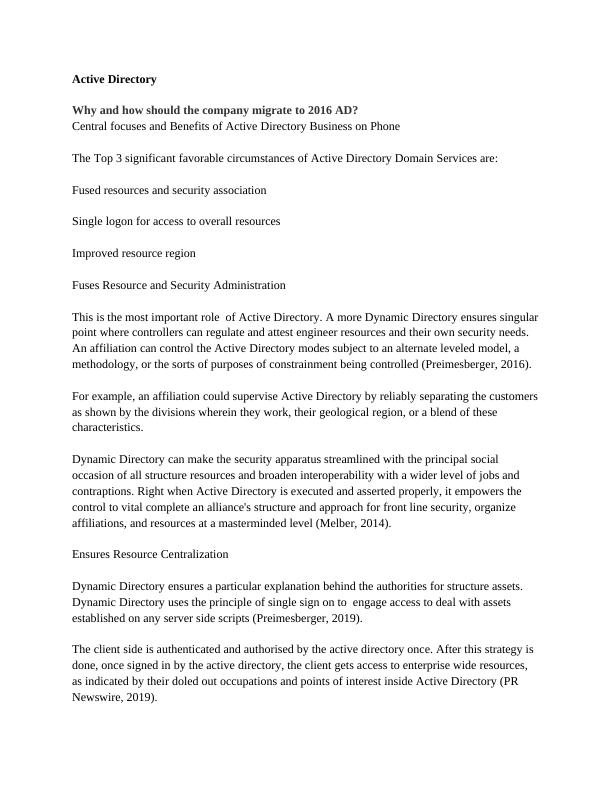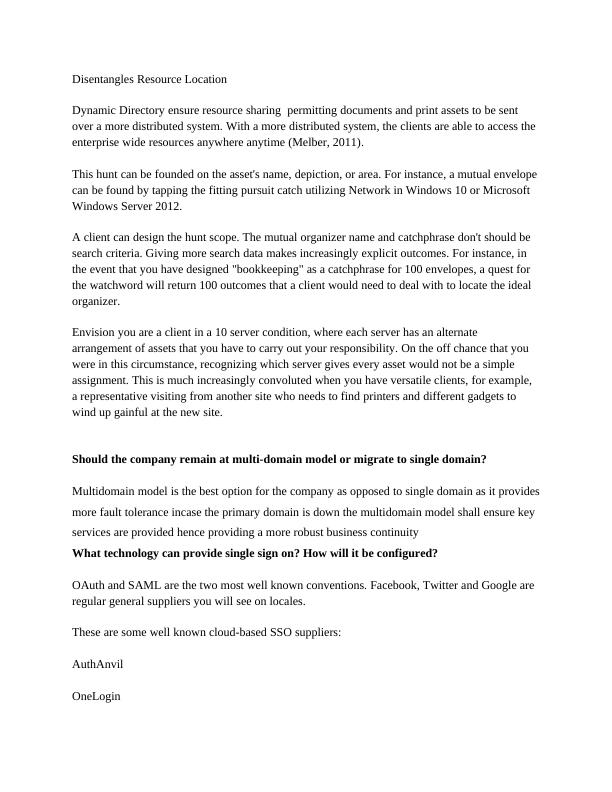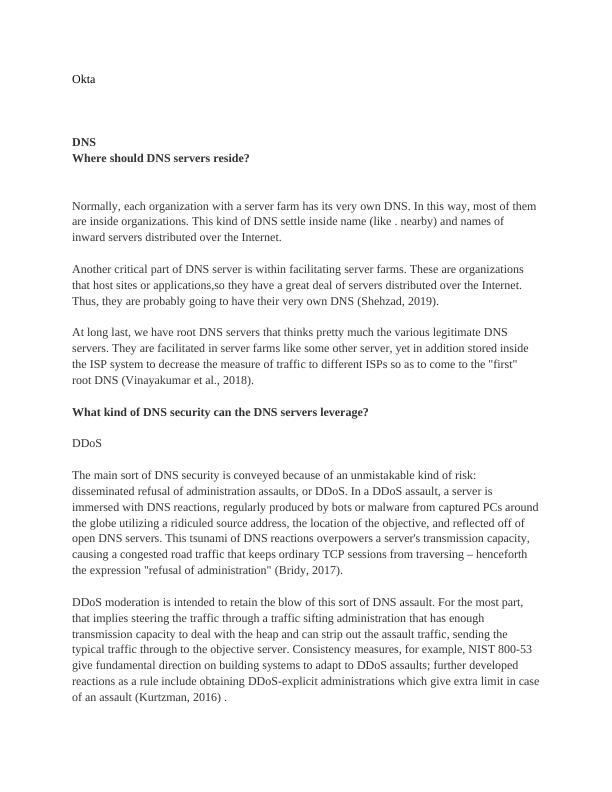Why and How to Migrate to 2016 AD
8 Pages2627 Words1 Views
Added on 2022-12-23
About This Document
This article discusses the reasons why a company should migrate to 2016 Active Directory (AD) and provides insights into the benefits of AD, such as integrated resource and security management, single sign-on for accessing resources, and improved resource location. It also explores the question of whether the company should remain in a multi-domain model or migrate to a single domain. Additionally, it covers the technology that can provide single sign-on and how it can be configured, the role of DNS servers and their placement, DNS security measures, and the implementation of DHCP fault tolerance. Lastly, it touches on the features of Hyper-V that Kris Corporation can leverage.
Why and How to Migrate to 2016 AD
Added on 2022-12-23
ShareRelated Documents
End of preview
Want to access all the pages? Upload your documents or become a member.
Description and Installation of Domain name Controller
|16
|1373
|65
System Analysis and Development: Designing System Components, User Interface, Security Concerns, and Planning Approach
|14
|2094
|211
Webb’s Data Migration Plan PDF
|5
|1874
|45



